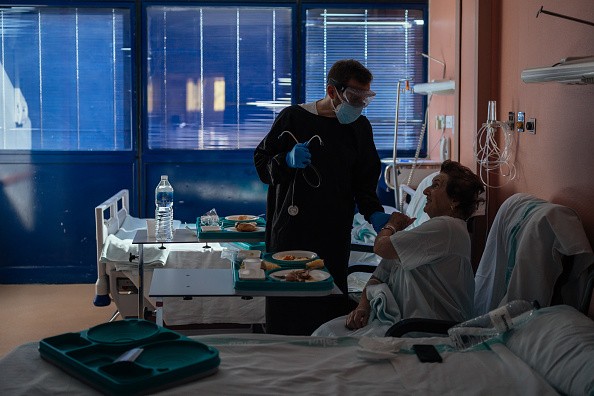COVID-19 Patients Are Highly Infectious During the First Five Days of Showing Symptoms, Study Finds
COVID-19 disease lasts for only nine days after patients start showing symptoms, as per a new study that also reveals patients to be "most infectious" within five days of showing symptoms.

Researchers believe that the intensity of being infectious can explain why the pandemic has been so hard to contain and how it spread so quickly.
According to Times Now News, though the genetic material of the COVID-19 can still be detected in the stool or respiratory samples of patients, no infectious virus particle was found beyond nine days of symptoms onset. The new study published in the Lancet Microbial Journal revealed that it was noted that COVID-19 infected individuals are most likely to be highly infectious for the first five days after the symptom onset.
Muge Cevik, the lead study author from the University of St.Andrews in the UK, said this is the first systematic study and meta-analysis that comprehensively compared and examined viral load and shedding for the three human coronaviruses.
Cevik added: "It provides a clear explanation for why SARS-CoV-2 spreads more efficiently than SARS-CoV and MERS-CoV and is so much more difficult to contain."
Read also: Does Everything You Drink Smells Like This? You Might Have Coronavirus, Experts Say
COVID-19 infected patients should isolate for at least ten days
Key factors involved in the infectious period of COVID-19 were assessed by the researchers, such as the length of time a person sheds viral genetic material (RNA) of the pathogen, viral load, and isolation of the live virus. Researchers also concluded that the government regulations to isolate for ten days are in line with many places' findings.
The analysis included 98 studies showing that five or more participants randomized controlled trials and cohort studies. The analysis included hospitalized patients, wherein eight on the 2002-03 SARS pandemic and one on the MERS COVID-19 infection.
Moreover, researchers noted that the highest SARS-CoV-2 RNA viral load was detected early in the disease's course when the symptoms began. Or before day five of COVID-19 symptoms. Researchers suggested that the infection may clear out faster; while the viral load could be the same at the onset of the disease, it may stay for a shorter period than those with symptoms.
Forbes reported that the "short-lived" infectiousness of the coronavirus suggests an explanation of why the COVID-19 is so hard to contain compared to other viruses such as SARS or MERS, as per the researchers. The coronavirus's viral load, like how much live virus there is, spike much earlier than the other viruses, specifically within the first five days after symptoms begin, for SARS, 10-14 days and MERS 7-10 days to provide public health experts more time in tracking and isolating potential contacts.
Read also: Arthritis Drug Decreases COVID-19 Deaths Among Elderly, Says New Study
Subscribe to Latin Post!
Sign up for our free newsletter for the Latest coverage!
© 2025 Latin Post. All rights reserved. Do not reproduce without permission.














